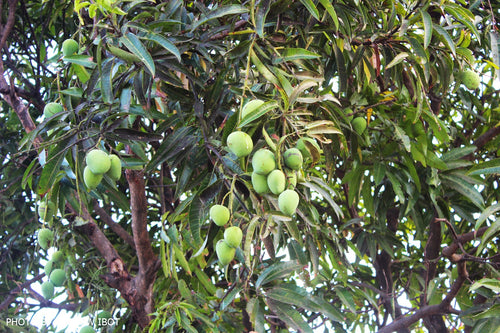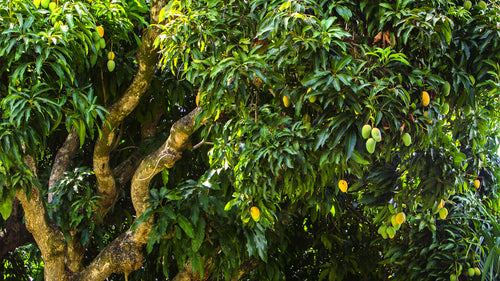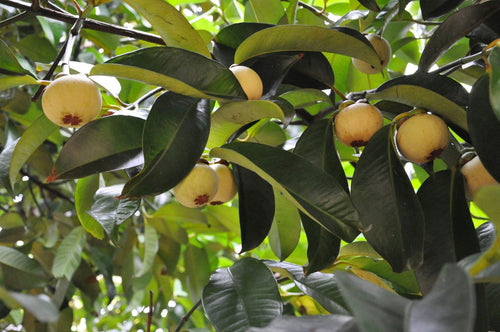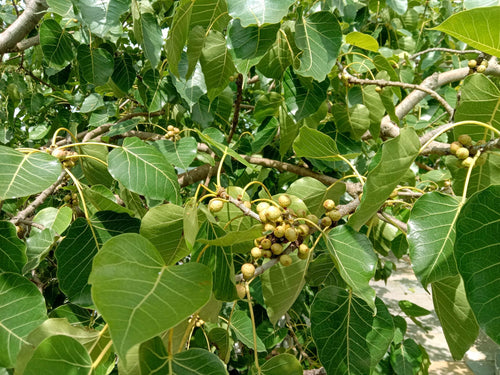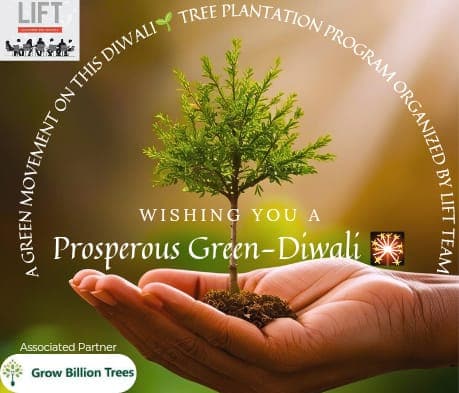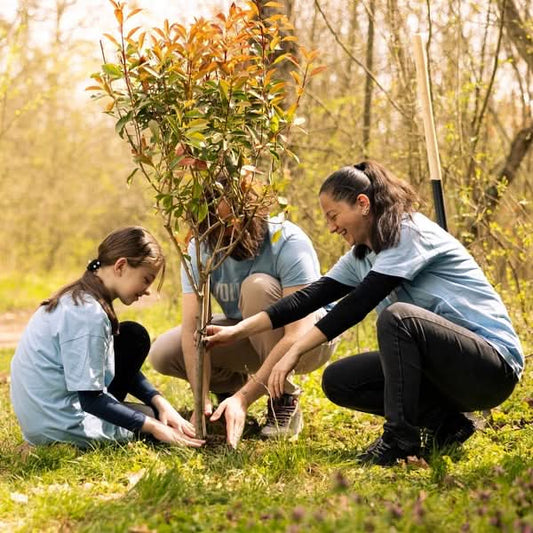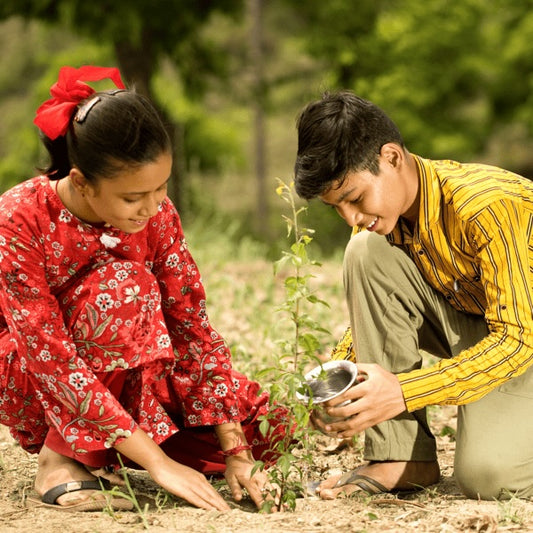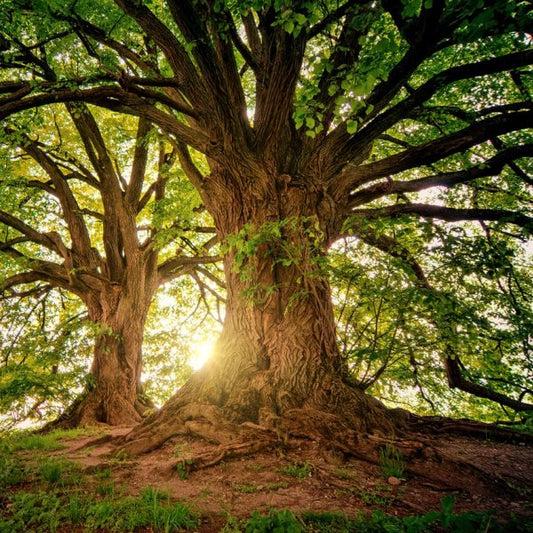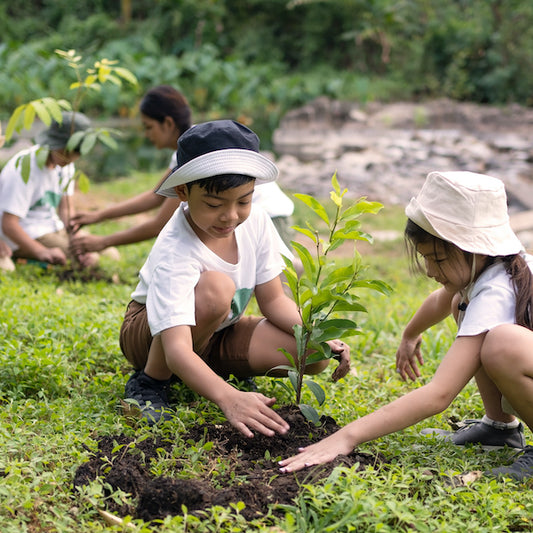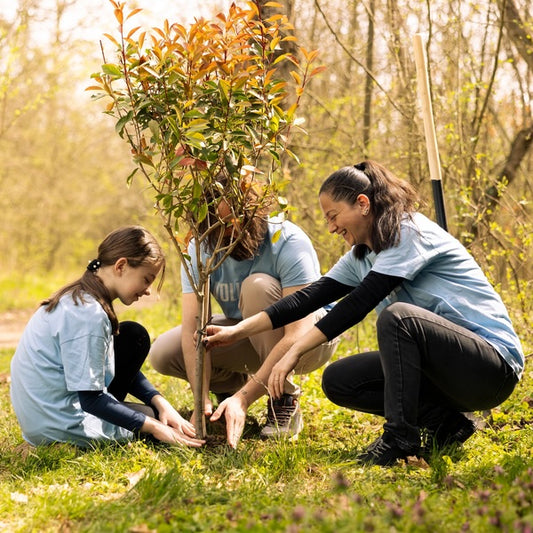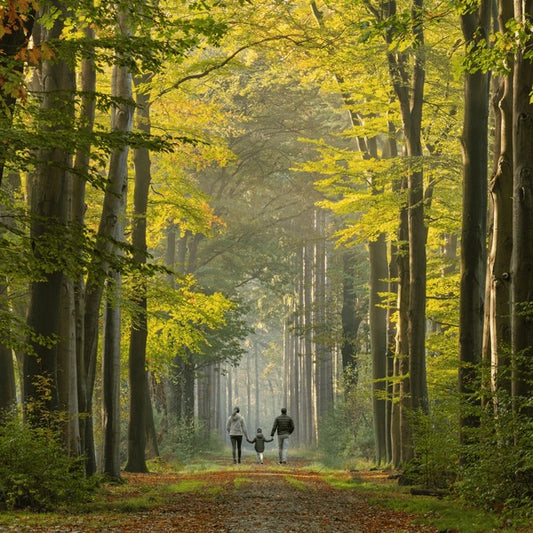Headout's Commitment to Green Spaces: Empowering Employees with Urban Forests
Headout's tree plantation initiative for employee engagement in urban forests focuses on fostering a sustainable environment while encouraging active Read more
Project Update 3
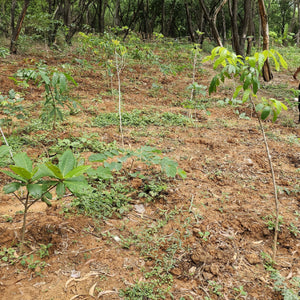

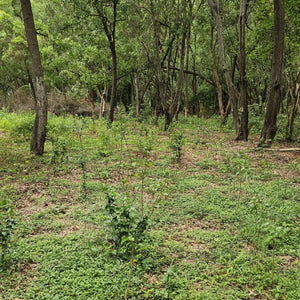
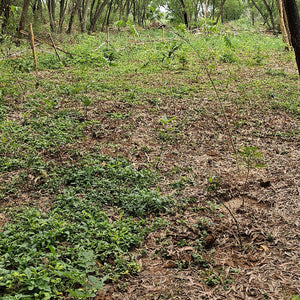
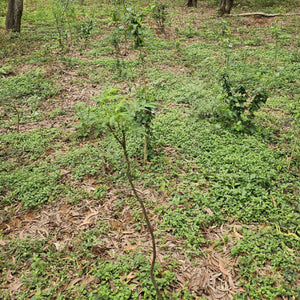
Project Update 2
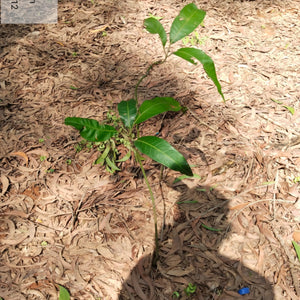
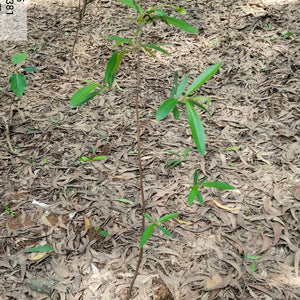
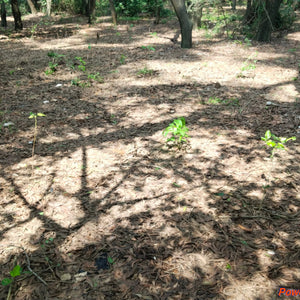
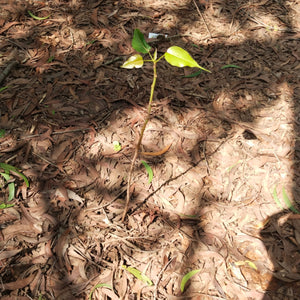
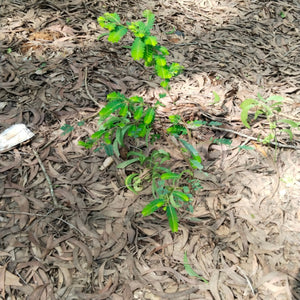
Project Update 1
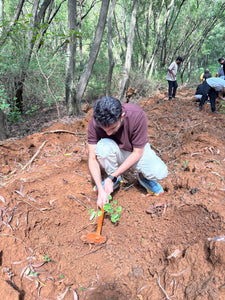
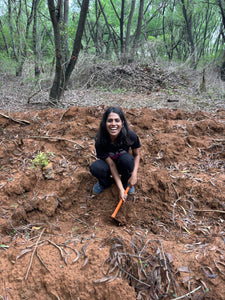
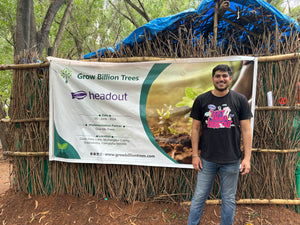
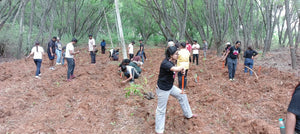
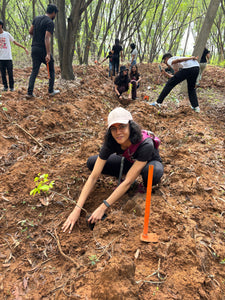
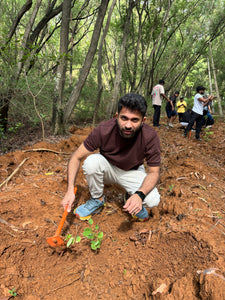
Digital Forest
Forest with 100 Trees planned
Want to plant your tree now?
Plant a Tree @ 299Headout's Commitment to Green Spaces: Empowering Employees with Urban Forests
Headout's tree plantation initiative for employee engagement in urban forests focuses on fostering a sustainable environment while encouraging active employee participation. Through this initiative, employees come together to plant trees, contributing to the creation of urban green spaces that enhance biodiversity and improve air quality. This hands-on experience not only strengthens teamwork but also allows employees to directly impact the environment by promoting a greener, healthier future for urban communities. The initiative reflects Headout’s commitment to sustainability and social responsibility.
Project Planning & Execution
No of Trees: 100
Plantation Location: Dever Kere Lake, Muthanallur Colony, Gopasandra, Chikkathimmasandra, Karnataka 560099
Plantation Date: 5th June 2024
Name of Species: Peepal, Mango, Kadamb, Tamarind, Banyan
Species Selection & Its Benefits:
The species selected for Headout’s urban forestry initiative were thoughtfully chosen to resonate with the local ecosystem while maximizing ecological, cultural, and social impact. The selection emphasizes native and iconic tree species that are known for their long-term environmental contributions and cultural significance. These include Peepal, Mango, Kadamb, Tamarind, and Banyan, a blend that promotes biodiversity, provides vital ecosystem services, and enhances the quality of life in urban spaces.
Each species offers distinct environmental and wellness benefits. Peepal is revered in Indian culture, improves air quality by releasing oxygen even at night, and is traditionally used for respiratory and digestive treatments. Mango, the beloved fruit-bearing tree, supports pollinators and offers nutrient-rich fruit that boosts immunity and overall health.
Kadamb is known for its fragrant flowers and rainwater harvesting benefits, while its bark and leaves are used in traditional medicine. Tamarind trees offer dense shade, erosion control through strong root systems, and tangy, antioxidant-rich fruit widely used in culinary and medicinal applications. Banyan, a symbol of strength and longevity, provides expansive canopy cover, reduces heat islands, and supports numerous bird and insect species through its aerial roots and fig-like fruit.
By choosing these multi-benefit species, Headout ensures that its urban forest not only enhances air quality, sequesters carbon, and supports native wildlife but also strengthens the community’s connection to nature. This selection reinforces Headout’s commitment to meaningful experiences, where nature, culture, and well-being come together in harmony.
Beneficiaries Details
-
Target Population: Employees, stakeholders, and local community members of Karnataka
-
Age Group: All age groups focus on adults to seniors
-
Gender: Inclusive of all genders
- Social & Economic Status: Open to all social and economic backgrounds, emphasizing community involvement
Planting Methodology and Its Advantages
Urban Forestry: An urban forest is a network of trees, shrubs, and vegetation strategically planted in urban areas to enhance biodiversity, improve air quality, reduce the urban heat island effect, and provide green spaces for community well-being. It helps mitigate climate change by absorbing carbon dioxide, promotes mental health through accessible green areas, and supports local wildlife by creating habitats. Urban forests play a vital role in building resilient, sustainable cities that benefit both the environment and the people who live in them.
Advantages of Urban Forestry
-
Climate Regulation and Cooling Effect: Urban forests help mitigate the urban heat island effect by providing shade and cooling through transpiration, lowering temperatures in cities, reducing the need for air conditioning, and conserving energy.
-
Improved Air Quality: Trees absorb pollutants like carbon dioxide, nitrogen oxides, and particulate matter, leading to improved air quality and reducing the risk of respiratory illnesses in urban areas.
-
Stormwater Management and Flood Prevention: Urban forests improve the soil’s ability to absorb and retain water, reducing stormwater runoff, preventing flooding, and promoting groundwater recharge, thus helping manage water resources efficiently.
-
Soil Erosion Control: The deep root systems of trees prevent soil erosion, especially in areas with heavy rainfall or steep slopes, stabilizing the land and reducing soil loss in urban environments.
-
Aesthetic and Recreational Value: The transformation of unused spaces into green zones adds aesthetic value to the area and provides employees and local communities with recreational spaces, making the workplace more enjoyable.
-
Enhanced Community Engagement and Well-being: Urban forests provide accessible green spaces where communities can engage in recreational activities, improving mental health, reducing stress, and fostering a sense of environmental stewardship among residents and employees.
-
Increased Property Value: Properties located near urban forests or green spaces tend to have higher market values, benefiting local property owners and increasing the overall appeal and livability of the area.
- Noise Reduction: Urban forests act as natural sound barriers, reducing noise pollution and creating quieter, more peaceful surroundings.
Activities During Tree Plantation
The tree plantation drive at Dever Kere Lake, Muthanallur Colony, Gopasandra, Karnataka, was marked by active employee participation, fostering a strong sense of environmental responsibility and teamwork. The event was carefully structured to ensure smooth execution and meaningful engagement.
In preparation for the plantation, saplings were carefully placed and positioned for optimal growth. Employees actively took part in planting native and fruit-bearing trees, deepening their understanding of sustainable practices and the ecological benefits of urban greening. Their hands-on involvement created a more immersive and fulfilling experience.
The plantation drive concluded with a reflection session, allowing participants to appreciate their contributions towards a greener environment. The initiative reinforced Headout’s commitment to sustainability, employee engagement, and corporate environmental responsibility.
Conclusion Elements
Impact
Direct Impact
| Parameters | Values | References |
| No. of Trees Planted | 100 | |
| Green Cover (Acres) | 0.12 | |
| Carbon Sequestration Potential (KG) | 20 |
Small to medium-sized trees can sequester around 10–48 kilograms (22–106 pounds) of CO₂ annually. https://growbilliontrees.com/blogs/knowledge/how-much-co2-can-one-tree-absorb |
| Carbon Sequestration by 100 mature trees ( Tons/year) | 2 Tons | No. of Trees x Carbon Sequestration by 1 mature trees per year |
| Carbon Credit Equivalent | 2 | One carbon credit is equivalent to one tonne of carbon dioxide or the equivalent amount of another greenhouse gas. |
| Carbon Footprint of an avg Indian Citizen (Tons/Year) | 1.8 | https://www.iea.org/countries/india/emissions |
| Offsets Annual Carbon Footprint of (Adults) | 1 | Carbon offset by 100 mature trees per year / Carbon Footprint of an avg Indian Citizen per year |
*This impact analysis is forward-looking. An urban-forest project matures in 3-5 years.
Indirect Impact
Community Impact
-
Improved Public Health: By improving air quality and reducing urban heat, the project indirectly contributes to better public health. The presence of green spaces encourages outdoor activities, which can reduce stress levels, promote mental well-being, and decrease the incidence of respiratory diseases.
-
Environmental Awareness: Involving communities in urban forestry raises awareness about environmental conservation and promotes sustainable practices in daily life.
-
Employee Morale: The initiative fostered a sense of pride and connection among employees, strengthening team bonds and their alignment with the company’s values.
-
Inspiration for Change: By showcasing the potential of urban forestry, the project has encouraged other organisations and local communities to undertake similar initiatives.
-
Cultural Shift: The initiative instilled a mindset of sustainability and environmental care among participants, creating advocates for green practices in their personal and professional lives.
Environmental Impact
-
Carbon Sequestration: The trees planted through Headout's urban forestry initiative absorb carbon dioxide, acting as carbon sinks and helping mitigate climate change by reducing greenhouse gas emissions.
-
Soil Health Improvement: The tree planting initiative enhances soil health by enriching it with organic matter, improving soil fertility and structure, which supports the growth of surrounding vegetation.
-
Erosion Prevention: Tree roots help stabilise the soil in urban areas, preventing erosion caused by wind and water, while safeguarding nearby properties and infrastructure from potential damage.
-
Biodiversity Conservation: By creating green spaces, the initiative supports local biodiversity, providing habitats for various species, pollinators, and beneficial insects, and enhancing the ecological balance in urban areas.
-
Water Cycle Regulation: The urban forestry project helps regulate the water cycle by improving water retention in the soil, recharging groundwater levels, and reducing surface runoff, leading to a more balanced and sustainable urban environment.
- Microclimate Regulation: Trees planted through this initiative moderate temperature extremes, reduce wind speeds, and increase humidity, creating a favourable microclimate for both the community and the urban ecosystem.
Achievements
SDG Goals Achieved through Urban Forestry
-
SDG 3: Good Health and Well-Being – Headout's urban forestry initiative enhances air quality and creates green spaces that support physical and mental well-being. The presence of trees in environments promotes stress relief and encourages outdoor learning and play, fostering a healthier lifestyle for children and the wider community.
-
SDG 6: Clean Water and Sanitation – Trees planted as part of the initiative aid in water conservation by boosting groundwater recharge, reducing surface runoff, and improving soil moisture retention. Headout contributes to sustainable urban water systems through strategic afforestation.
-
SDG 7: Affordable and Clean Energy – By mitigating the urban heat island effect, Headout’s tree plantation helps reduce ambient temperatures, lowering the demand for air conditioning and promoting energy efficiency through natural cooling.
-
SDG 8: Decent Work and Economic Growth – The initiative creates green employment opportunities in nursery operations, plantations, and long-term maintenance, contributing to local economic growth and sustainable livelihoods.
-
SDG 9: Industry, Innovation, and Infrastructure – Headout integrates sustainable urban forestry into community and infrastructure planning. The use of native species and community involvement promotes environmental innovation and urban resilience.
-
SDG 10: Reduced Inequalities – The plantation was inclusive, engaging employees from diverse backgrounds in a shared environmental mission. By developing accessible green spaces, Headout promotes environmental equity and encourages broader community participation.
-
SDG 11: Sustainable Cities and Communities – Headout’s efforts directly contribute to more sustainable and liveable cities by increasing urban green cover, supporting biodiversity, and improving air quality.
-
SDG 12: Responsible Consumption and Production – Through careful species selection and long-term sustainability planning, Headout promotes responsible use of natural resources and long-term environmental stewardship.
-
SDG 13: Climate Action – The initiative actively contributes to climate change mitigation by enhancing carbon sequestration and expanding green cover, which helps reduce greenhouse gas emissions in urban areas.
-
SDG 15: Life on Land – By planting native and fruit-bearing trees, the initiative enhances urban biodiversity, supports pollinators and local wildlife, and strengthens ecological health in the region.
-
SDG 16: Peace, Justice, and Strong Institutions – Through inclusive community involvement, Headout fosters environmental awareness, responsible citizenship, and collaborative decision-making for sustainable development.
-
SDG 17: Partnerships for the Goals – The success of the initiative was driven by collaboration with partners such as Grow Billion Trees and local stakeholders. Headout demonstrates the power of partnerships in driving impactful environmental action and community engagement.
ESG Achieved through Urban Forestry:
-
Environmental Impact: Headout’s urban forestry initiative makes a meaningful contribution to environmental sustainability. By planting a diverse mix of native and beneficial tree species, the company enhances local biodiversity, supports pollinators and wildlife, and strengthens urban ecosystems. These trees act as natural carbon sinks, helping to reduce atmospheric CO₂ levels and combat climate change. Additionally, the plantation improves climate resilience by regulating ambient temperatures, reducing the urban heat island effect, improving air quality, and increasing groundwater recharge. This forward-looking effort supports long-term ecological balance and a healthier environment for future generations.
-
Social Impact: Headout’s urban forestry initiative fosters social responsibility and community well-being by involving employees and local stakeholders in environmental stewardship. Through active participation in tree planting and awareness efforts, the initiative cultivates a deeper connection with nature and promotes collective action for sustainability. The creation of green spaces improves air quality, encourages outdoor activity, and contributes to better mental and physical health. Additionally, the project supports green jobs through sapling plantation and ongoing maintenance, while promoting inclusivity by ensuring access to cleaner, greener environments for all communities, including underserved groups. This initiative helps build a more resilient, equitable, and environmentally conscious society.
- Governance Impact: Headout showcases strong environmental leadership and responsible governance through its urban forestry initiative. By integrating sustainability into its core CSR strategy, the company promotes transparency and accountability in project planning, execution, and reporting. Collaborating with environmental organisations and local communities, Headout ensures that its afforestation efforts are inclusive, impactful, and aligned with broader ecological goals. This governance approach not only supports environmental and social outcomes but also reflects the company’s long-term vision for sustainable growth and ethical corporate responsibility.
Building Communities
One of the most impactful outcomes of Headout’s urban forestry initiative was the sense of unity and collaboration it cultivated. By involving employees, local communities, and volunteers, the project became a collective mission to create sustainable urban green spaces, fostering a shared commitment to a greener future.
-
Empowering Communities: Participants became active contributors, gaining knowledge about urban forestry practices and taking ownership of the initiative. This empowerment strengthened their connection to the environment and reinforced their role as environmental stewards.
-
Fostering Partnerships: The project brought together diverse stakeholders, including Headout, Grow Billion Trees, and local communities, highlighting the value of collaboration in achieving environmental and social goals.
-
Creating a Ripple Effect: As communities experienced the benefits of urban forestry, their enthusiasm inspired others to adopt similar practices, amplifying the initiative's positive impact across the region.
This initiative demonstrates that environmental sustainability thrives when rooted in collective effort. It’s not just about planting trees, it’s about planting hope, collaboration, and a shared vision for a healthier and greener future.
Commitment by Grow Billion Trees
Trees for Corporates
Trending
Most Popular
1. Tree Plantation Drive
Headout's urban forest adventure began with a spirited tree plantation drive. Imagine a team swapping laptops for shovels, planting saplings like eco-warriors on a mission! These drives bring employees together, fostering teamwork while giving the planet a green high-five. A small step for employees, a giant leap for the urban ecosystem. With every sapling planted, Headout inches closer to a sustainable future, proving that nurturing the environment is just as important as nurturing business growth. Who knew saving the planet could be so... hands-on?
2. Employee Engagement in Sustainability
At Headout, employee engagement isn’t just about team lunches and outings—it’s about getting their hands dirty, literally. With the urban forest initiative, employees experience nature firsthand, contributing to a cause bigger than themselves. It’s not every day you can say you’ve planted a forest after a coffee break! By involving employees in this green mission, Headout not only fosters environmental stewardship but also creates a unique team-bonding experience that’s hard to replicate. Corporate sustainability never felt this satisfying (or muddy)!
3. Urban Forest Creation
Headout’s foray into urban forest creation is like bringing the jungle to the concrete jungle. With space in cities dwindling, planting trees is more than just symbolic—it’s essential. These mini-forests breathe life into urban sprawls, providing shade, oxygen, and a home for birds and critters. Headout’s urban forest isn’t just about trees; it’s about rethinking how we live in cities, ensuring that even amid skyscrapers, there’s room for nature to thrive. Talk about turning over a new leaf, literally!
4. Corporate Social Responsibility (CSR)
Headout’s CSR isn’t a tick-the-box affair; it’s a genuine commitment to making the world greener. Their tree plantation efforts in urban forests are more than PR stunts—they’re tangible actions that make a difference. Through this initiative, Headout addresses climate change, air quality, and urban heat islands all in one swoop. It’s CSR that walks the talk—planting roots deep in environmental responsibility. Now that’s what we call business with a green thumb!
5. Carbon Footprint Reduction
We all know tech can leave a heavy carbon footprint, but Headout is flipping the script. By planting trees in urban forests, they’re offsetting their emissions and making strides toward carbon neutrality. These leafy allies soak up CO2, helping Headout shrink its footprint with every sapling. It’s like Mother Nature’s version of a “Ctrl+Z” for the environment! Headout is committed to balancing its tech-driven innovation with eco-friendly action, ensuring the future is not only digital but also green.
6. Biodiversity Boost
Who says cities are just for humans? Headout’s urban forest initiative is an open invitation for birds, insects, and other wildlife to call the urban jungle their home. These forests act like mini nature reserves, boosting biodiversity in unexpected places. As Headout plants trees, they’re also planting possibilities for critters to thrive. The result? A vibrant ecosystem in the heart of the city, where nature and humans coexist. It's biodiversity, but make it urban-chic!
7. Green Office Initiative
Headout’s green office isn’t just about recycling paper—it’s about actively contributing to a greener planet. Their urban forest initiative brings the greenery outside into the heart of their work culture. Employees aren’t just working at their desks; they’re working for the environment too. From desk plants to urban forests, Headout’s green office initiative is a holistic approach to sustainability. It’s eco-friendly, employee-friendly, and planet-friendly, all rolled into one. A win-win-win!
8. Sustainable Future for Cities
In a world of rising concrete and dwindling green spaces, Headout’s urban forest initiative paves the way for a sustainable future. By creating urban oases, they’re proving that cities can be both developed and eco-friendly. Headout envisions a future where urban forests become the norm, balancing urbanization with environmental needs. It’s not just about today—it’s about ensuring cities remain livable, breathable, and sustainable for the generations to come. Now that’s future-forward thinking!
FAQ
What is Headout’s tree plantation initiative about?
Headout’s tree plantation initiative focuses on creating urban forests as part of our employee engagement and sustainability efforts. Our aim is to increase green cover in urban areas, reduce carbon footprints, and enhance biodiversity. By involving employees in planting trees, we not only contribute to environmental sustainability but also foster teamwork and a sense of purpose within the company. The initiative supports long-term ecological benefits, improving air quality and providing green spaces for the community, all while aligning with our values of environmental responsibility.
How does the tree plantation initiative benefit employees?
Headout’s tree plantation initiative benefits employees by offering them a meaningful way to contribute to environmental sustainability. It promotes physical well-being by encouraging outdoor activities, and mental well-being through a sense of accomplishment. Employees bond during these events, fostering teamwork and camaraderie. Additionally, participating in such initiatives enhances employees’ connection to nature and gives them the opportunity to positively impact their surroundings, adding to their overall job satisfaction and sense of purpose.
How does Headout choose tree species for urban forests?
We carefully select native tree species that are well-suited to the local environment and can thrive in urban conditions. Native species are chosen for their ability to adapt to local soil, climate, and water availability. They also support local biodiversity by providing habitat for native birds, insects, and animals. By selecting these species, we ensure the long-term sustainability of the urban forest, contributing to a healthy and resilient ecosystem that benefits the environment and the community.
Why are urban forests important for cities?
Urban forests are crucial for enhancing the quality of life in cities. They improve air quality by absorbing pollutants, provide shade, and reduce the urban heat island effect. Urban forests also serve as habitats for wildlife, promoting biodiversity in densely populated areas. Additionally, they offer spaces for recreation, stress relief, and community activities, making cities more livable and sustainable. Headout’s urban forest initiative aims to create these green spaces, improving the environment for both current and future generations.
How does Headout’s tree plantation initiative help combat climate change?
By planting trees, Headout contributes to carbon sequestration, where trees absorb carbon dioxide from the atmosphere and store it. This process helps mitigate the effects of climate change by reducing the amount of CO2 in the air. Urban forests also help cool cities, reducing the need for air conditioning and lowering energy consumption. Through our tree plantation initiative, we take a proactive step in addressing global climate issues while making local environments more resilient to climate impacts.
What role do employees play in the tree plantation initiative?
Headout employees are actively involved in all stages of the tree plantation initiative. From selecting tree species to planting and maintaining the urban forests, our employees take hands-on roles in the process. This involvement fosters a strong connection to the project and helps instill a sense of environmental stewardship. Employees work together to create lasting positive impacts on their surroundings, which in turn strengthens team dynamics and enhances job satisfaction.
How does the urban forest initiative align with Headout’s sustainability goals?
Headout’s urban forest initiative aligns with our broader sustainability goals of reducing carbon footprints, enhancing biodiversity, and promoting environmental responsibility. The initiative reflects our commitment to creating a more sustainable future by actively contributing to greener cities. By planting trees and establishing urban forests, we take measurable steps toward fulfilling our corporate social responsibility and meeting global environmental targets, such as climate action and sustainable urban development.
How long does it take for the urban forest to grow?
The growth of an urban forest depends on the tree species planted and the environmental conditions. Typically, saplings start making an impact within 3-5 years as they begin providing shade, improving air quality, and supporting local wildlife. Full maturation can take 10-20 years, depending on the species. Headout’s initiative includes long-term maintenance plans to ensure that the trees thrive and contribute to the environment for years to come, creating a lasting legacy for the company and community.
What environmental benefits do urban forests provide?
Urban forests offer a wide range of environmental benefits, including improved air quality, carbon sequestration, and biodiversity support. They reduce urban temperatures, mitigate flooding by improving soil permeability, and create habitats for local wildlife. These forests also enhance the aesthetic value of cities and provide green spaces for recreation. Headout’s urban forest initiative contributes to all these benefits, helping to create a healthier, more sustainable urban environment for the community.
How can I get involved in Headout’s tree plantation initiative?
We welcome employee participation and community engagement in our tree plantation events. If you are part of the Headout team, you can sign up for upcoming events through internal channels. If you’re a community member, keep an eye out for opportunities to volunteer with us. By participating, you’ll not only help the environment but also contribute to a meaningful cause that aligns with Headout’s sustainability and community-focused values. Together, we can make a significant difference in our urban ecosystem.
- Choosing a selection results in a full page refresh.
- Opens in a new window.






